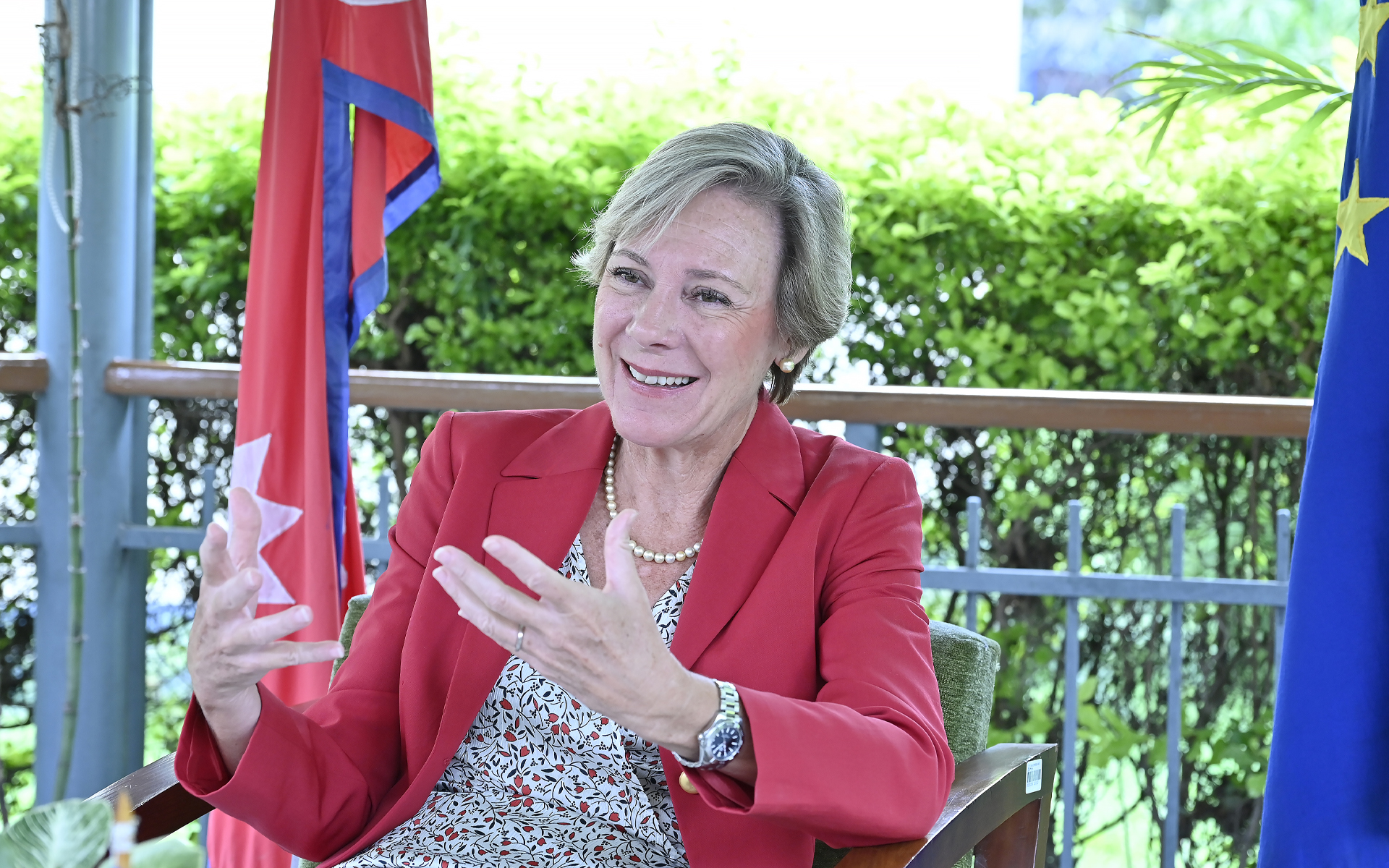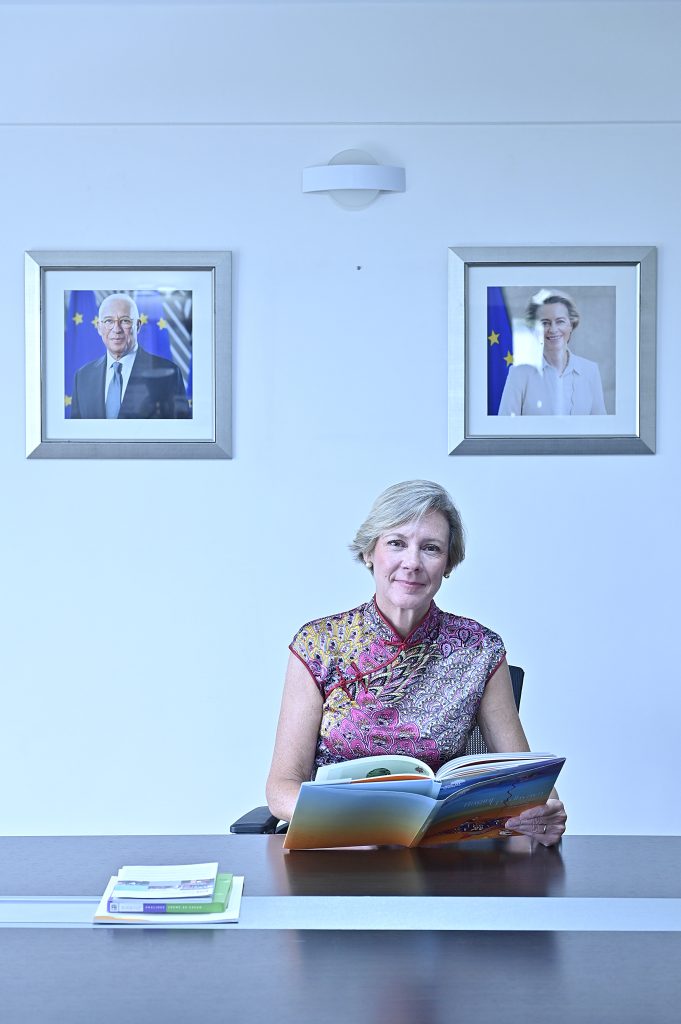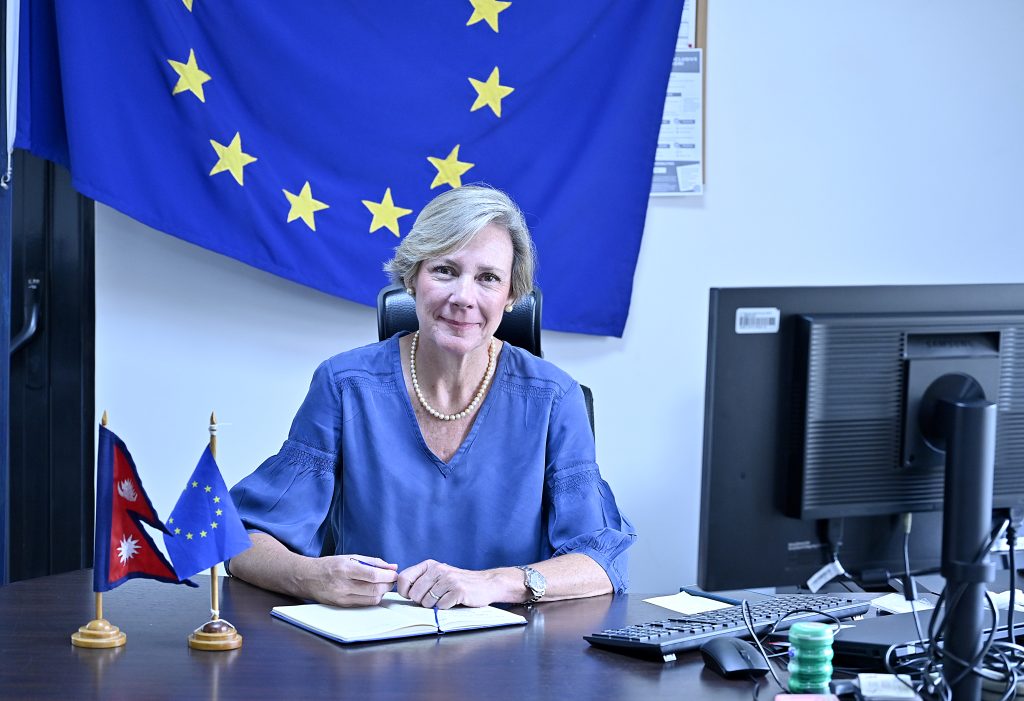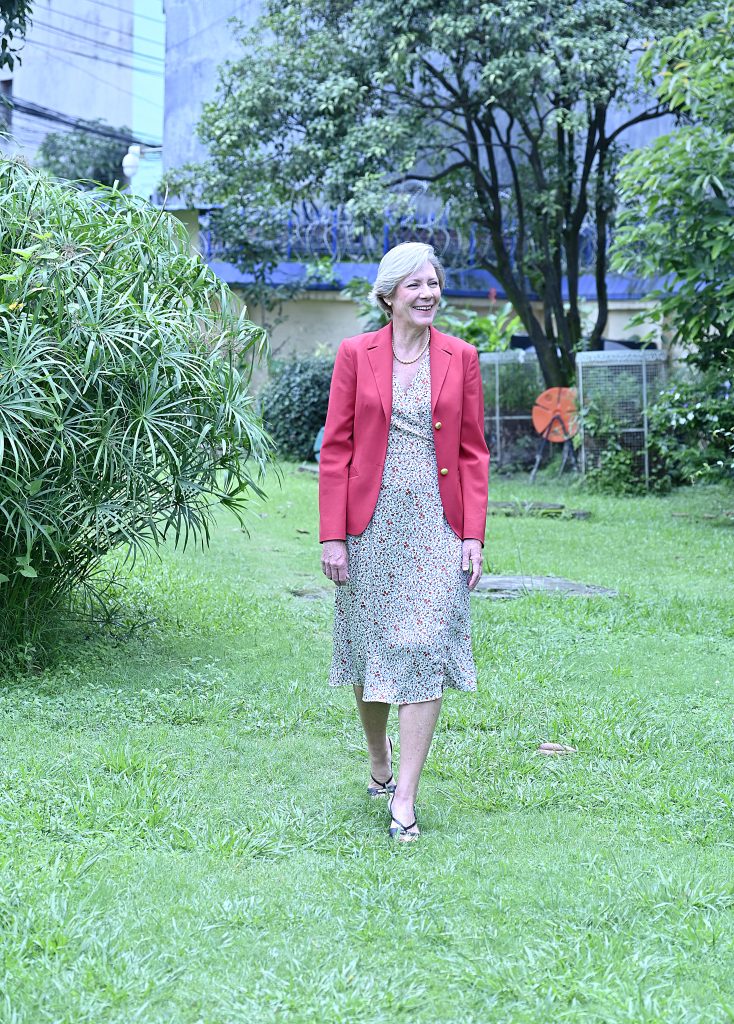

 20.14°C काठमाडौं
20.14°C काठमाडौं

For over five decades, the European Union has been one of Nepal’s good friends and steadfast development partners. At the forefront of this crucial relationship today is Her Excellency Veronique Lorenzo, the EU Ambassador to Nepal, who represents all 27 member states of the Union. An economist by training, she brings over 30 years of international experience with a strong focus on development cooperation. Her career has taken her to some of the most challenging postings in conflict-affected countries, including Mozambique, Afghanistan, Uganda, Myanmar, and Somalia.
She also served as the EU Ambassador to Somalia from 2016 to 2018. Before arriving in Kathmandu in 2023, she headed the South America Division in the European External Action Service.
Her extensive career includes leadership roles at the EU headquarters, where she led the Environment and Biodiversity Unit as well as the Health, Education, Culture, and Research Unit at the European Commission’s Development Cooperation Directorate. A French and Spanish national, she has represented the European Commission on the boards of major global initiatives such as the Global Fund for AIDS, Tuberculosis and Malaria, and the Global Partnership for Education.
Ambassador Lorenzo sat down with The Diplomat Nepal to discuss the future of Nepal-EU relations, her reflections on the country’s journey since the conflict, and the shared path ahead.
We’ve had a very long relationship, and I think it’s one that continues to grow stronger and expand. In the beginning, we were primarily a development partner, supporting Nepal across several sectors. But we also worked together in multilateral areas, including trade. Many global challenges require us to work together. The EU is always looking for allies, and I believe Nepal has been a very important ally over the years.

It’s difficult to compare. Over the past 24 years, Nepal has truly transformed. In 2001, I was involved in rural development projects, but it was difficult to travel outside Kathmandu due to the security situation. Kathmandu itself was much smaller. Now, the city has grown exponentially, urbanization has spread across the valley, and the population is far more urban than rural. Social indicators have also significantly improved, especially in health and education. You now have a much more educated young generation.
The answer is obvious; they are the future. We always prioritize engaging youth, to listen, to learn, and to involve them in shaping our actions and programs. I came to Nepal intending to engage with young people, and when I met them, I was amazed. They are articulate, aware, and full of energy. Our new trainees, for example, have impressed us with their passion. So, beyond being a policy priority, working with youth is truly a pleasure.
Our largest area of engagement continues to be support for Nepal’s economic and social development. We focus on three main sectors, including education, climate change and energy transition, and investment. Nepal has immense potential in renewable energy, especially hydropower. We are investing not only in generation but also in transmission, distribution, and energy efficiency, ensuring infrastructure is less energy-consuming and has a lower carbon footprint.
Secondly, for over 25 years, we’ve supported Nepal’s education system, particularly primary education. We’ve seen major improvements in access, especially for girls. However, quality remains a challenge, and that’s where we are intensifying efforts, especially in government schools. Lastly, we’re promoting investments in Nepal, particularly in hydropower, amounting to hundreds of millions of euros. We’re helping create a conducive environment for European investors to see Nepal’s potential.
We’ve done a lot to support Nepal during difficult times, but I wish I could say those times are behind us. Unfortunately, Nepal remains highly vulnerable, especially with climate change. Our humanitarian work focuses on disaster preparedness for floods, landslides, earthquakes, and health emergencies. Our support complements the government’s structures, which are key in responding effectively to crises. While we can’t avoid disasters, we can certainly reduce their impact through preparedness.

We’ve been strong supporters of Nepal’s peace process, including funding and engagement post-insurgency. We were pleased with the recent amendment to the transitional justice bill after many years. Now, we hope the process will move forward, always ensuring it is victim-centered and built through consensus with victims’ groups.
Yes. The focus has been on Nepal’s graduation from Least Developed Country (LDC) status, expected at the end of 2026. After graduation, Nepal will lose certain trade benefits, but there’s a transition period, and another option is the EU’s Generalised Scheme of Preferences Plus (GSP +), which still offers significant tariff preferences, provided certain criteria are met. We’ve supported Nepal in preparing for this shift. Additionally, we are promoting investment by showcasing Nepal’s potential to European investors. We’ve already organized two business forums and are planning a third.
The digital sector is particularly promising for two reasons, Nepal has green energy to power data centers and digital tools, and digital services aren’t constrained by Nepal’s geographic challenges. The ICT sector is growing fast, in both service exports and employment. We see real potential there.
Terai, Pahad to Himal, Nepal is incredibly diverse, with fascinating landscapes packed into a very small area. It’s extraordinary.
I’ve visited most provinces. Of course, trekking in the Annapurnas is magnificent. I’ve also traveled to Karnali and Sudurpaschim, where most of our programs are based. Karnali’s hills and rivers are stunning. I was particularly impressed by Ilam, it has great potential for tourism if developed with small guesthouses and trekking routes. But Mustang is in a category of its own, it’s unlike anything I’ve seen anywhere else. Truly magical.
I love a good daal-bhat. I’m also a fan of Thakali food and of Chef Santosh Shah. I’ve enjoyed his Mithila Thali multiple times, both in Kathmandu and in Janakpur. Whenever I visit Janakpur, I make sure to eat there.

I love the respectful and gentle nature of Nepali festivals. The one I enjoyed the most is Machhindranath Jatra, from the chariot preparation to the procession and the story of the deity ending a drought. It’s a beautiful festival. I must also mention Mayor Chiri Babu Maharjan, he does a fantastic job organizing it.
Like everyone, I know Resham Firiri. It’s so catchy. At first, I didn’t get it, but soon I found myself singing along. But I really enjoy Sushant KC’s music. I met him once and found his indie style very cool and soft. He’s now a huge star, and deservedly so.
Nepal has a vibrant and diverse cultural scene, rooted in an ancient, sophisticated heritage. Today’s young artists are building on that legacy in unique ways. The fusion of traditional and modern styles is stunning. I never know what to expect at an exhibition, but I always come away impressed.
We have supported cultural preservation in the past and recently launched a call for proposals with a focus on promoting culture and heritage. The aim is to link culture with income generation, to make art and tradition economically viable so that artists can continue their craft and contribute meaningfully to society.
I can safely say Nepalis are among the most welcoming, courteous, and soft-mannered people I’ve encountered in all my postings. There’s a unique openness here. In many countries, I’ve never been invited into a local’s home, but in Nepal, people invite you in, talk, debate, and share. It’s perhaps Nepal’s greatest strength, its people.